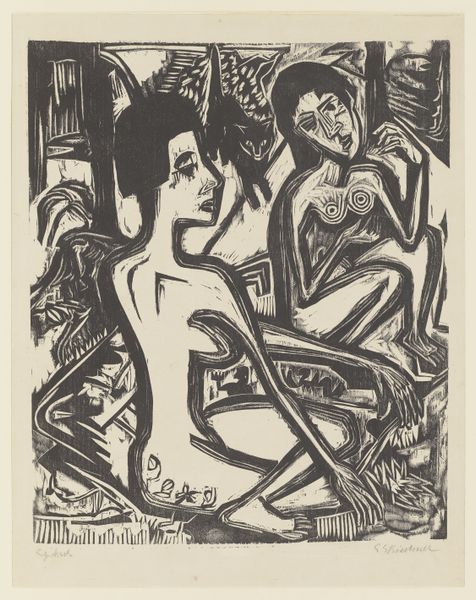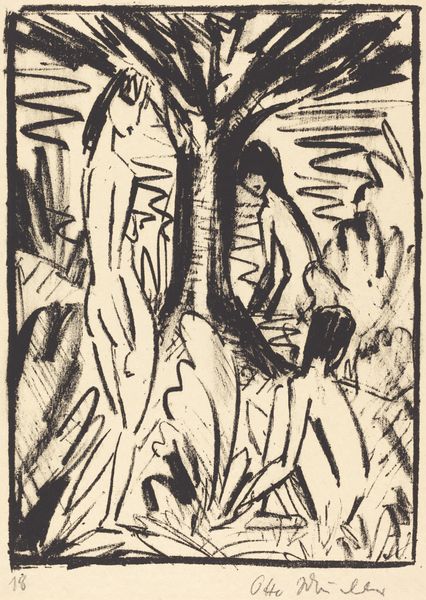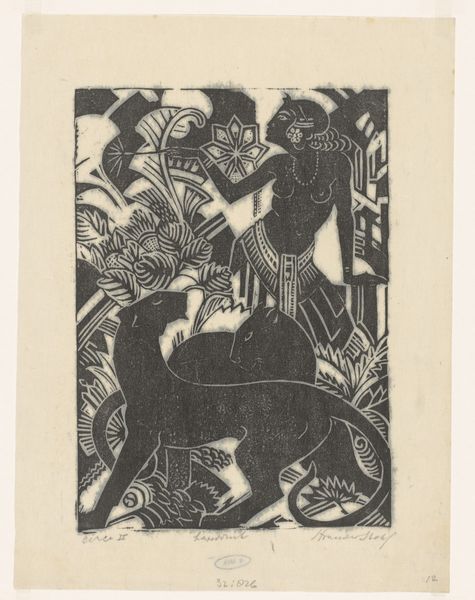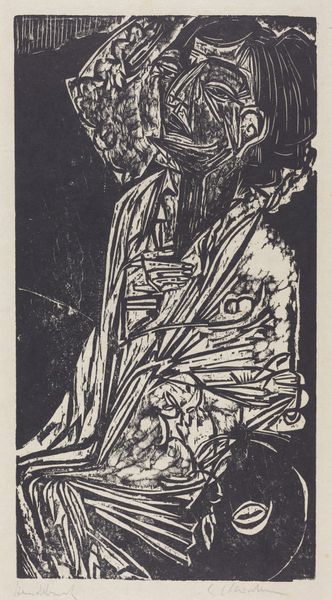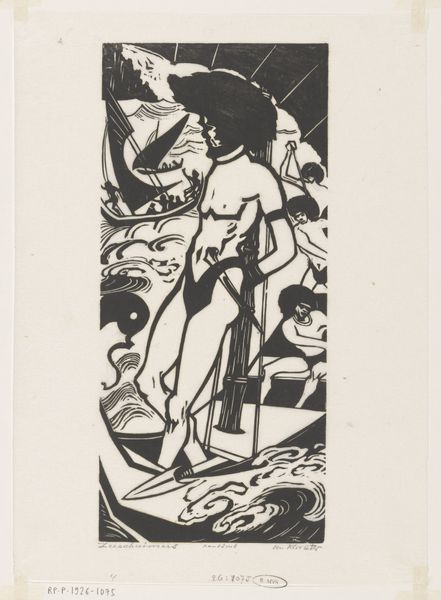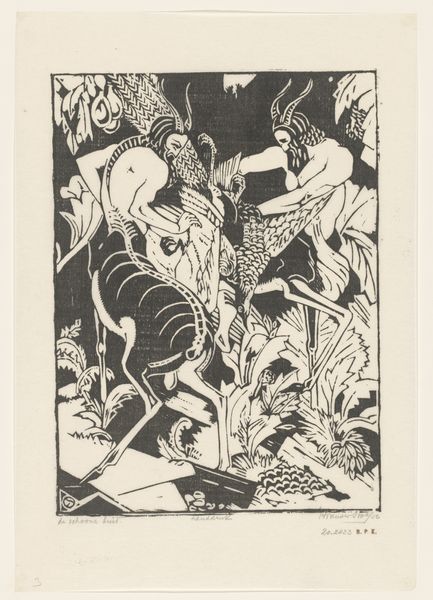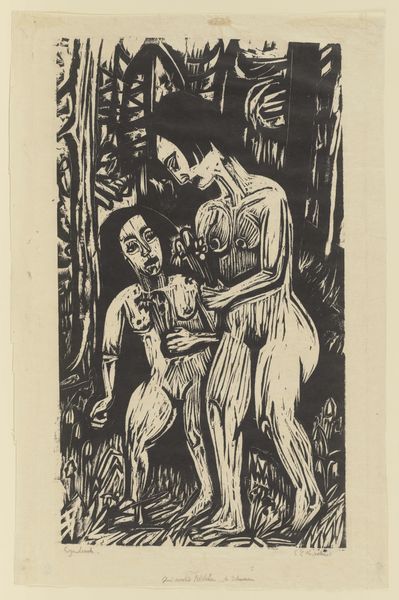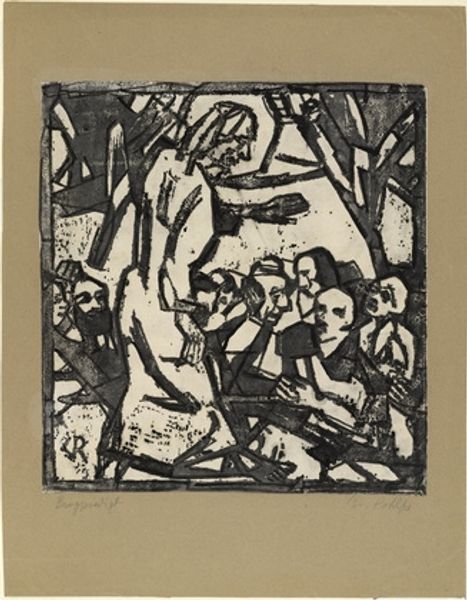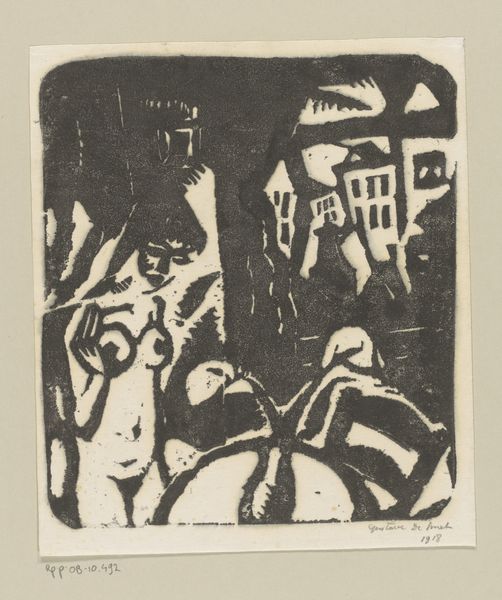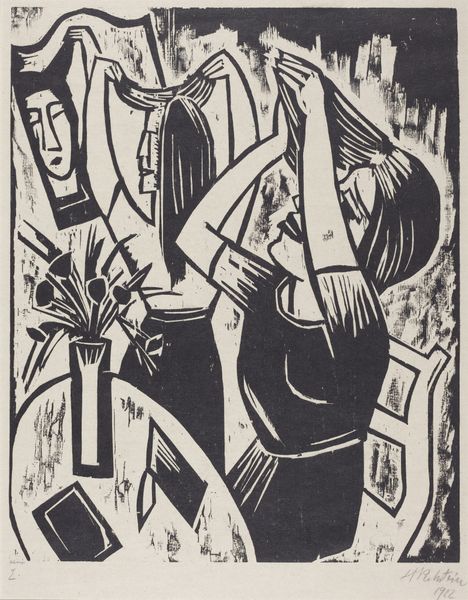
print, linocut, woodblock-print
#
medieval
#
narrative-art
# print
#
linocut
#
figuration
#
ink line art
#
linocut print
#
woodblock-print
#
expressionism
Dimensions: height 344 mm, width 248 mm, height 376 mm, width 262 mm
Copyright: Rijks Museum: Open Domain
Curator: Looking at Mommie Schwarz’s linocut print, dating to around 1922, titled *Aanbidding der herders* or "Adoration of the Shepherds," what strikes you? Editor: Immediately, it’s the starkness of the black and white that pulls me in. It’s bold and graphic, creating a really intense and reverent atmosphere. The high contrast also heightens the drama. Curator: That starkness aligns well with Expressionist aesthetics, an artistic language prevalent during that period, especially in printmaking. These black and white images allowed for broader and cheaper distribution within society, and a linocut allows an artist like Schwarz to reproduce images for distribution through periodicals like *De Amsterdammer,* where this print first appeared as an insert in their Christmas edition. Editor: I'm fascinated by that context – the artwork not just as a standalone object, but as part of a larger social dialogue. I can feel the message in the solid lines of this medium. I find it interesting that there is this narrative being shown during the post-WWI time period. It feels… surprisingly hopeful given the social climate of the day. It almost takes on this new significance given what the people had lived through in recent years. Curator: It's not unusual. Especially with images surrounding Christmas, which is historically a period of cultural expression with social and political function, in this instance using art and religious subjects as possible balms in reaction to a shattered world. This particular linocut combines a traditional religious subject matter with modernist, expressionist visual forms to reflect, and engage with, that world. The imagery reinforces messages of hope through the presence of family and spiritual figures, for example. Editor: Exactly! The figures almost appear medieval or Renaissance in style and dress. With that large central star hovering above the characters in a slightly abstracted sky... Curator: The artist skillfully used a pre-existing artistic language to build upon established sentiments and reach his audience. It provided the viewer of this work a perspective shift, through form and dissemination. Editor: Thinking about its impact then, I wonder if, as a print that was bound inside *De Amsterdammer,* whether the function was a way to invite the contemporary reader to reflect? It asks us to ponder who is being embraced by this image and who is not... The deep blacks surrounding the figures give the work a sense of universality but also one of exclusion. The composition invites contemplation and introspection. Curator: Precisely, this print in its original context within *De Amsterdammer* offers us insight into art's role in broader social discourse. Editor: It’s incredible how a piece rooted in a specific time can still resonate and push us to consider art’s evolving role and interpretation in contemporary life. Curator: Agreed. Mommie Schwarz provides that bridge from past to present for audiences through the work and its dissemination, through cultural expressions within a time period of intense reflection and revolution.
Comments
No comments
Be the first to comment and join the conversation on the ultimate creative platform.
